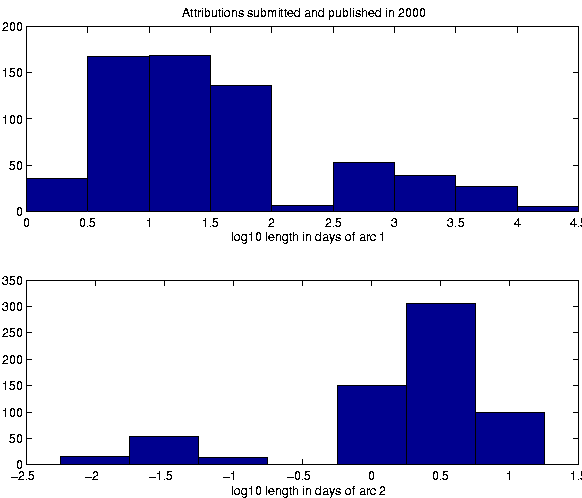


Next: 4. Conclusions and future
Up: 3. Results
Previous: 3.1 Handling of the
The total number of object identifications credited to our group in
about one year of operations is 2,528. Out of these, 902 were orbit
identifications; moreover, 173 were attributions to the newly
identified orbits. Still the majority of the identifications
(1,344+109) have been obtained by the use of only the attribution
method. The changes from month to month reflect experiments we have
been doing with new procedures, different order of operations, and
even the use of different computer hardware. They also reflect the
changes in the operations of the other groups hunting for
identifications since, as mentioned in the previous section, we are
not counting the cases in which we had found an identification and
then discovered it had been proposed by others and published, often
only a few days before.
Table 2 does not include a special case of
attributions, namely the attributions to numbered asteroids. We have
submitted 15 of these and all of them have been published.
Figure:
Length of observed arcs for all the
attributions proposed by our group and published by the MPC between
January and May 2000. Above: length of the first arc (the one for
which an orbit was computed and propagated). Below: length of the
second arc, for which an attributable was prepared.
 |
A more detailed analysis is possible for the identifications we
submitted in the last few months, since the protocol for submissions
has been followed in a precise way. The results for the 649
attributions submitted by us and published by the MPC between January and
May 2000 (excluding the attributions to other identifications; that is,
taking only the first column of Table 2) are
summarized in Figure 6 as a function of the length
of both observed arcs. The cutoff at 10 days for the length of the
second arc is the result of our choice of computing attributables only
for arcs shorter than 10 days; for longer arcs, the orbit
identification method is generally better. The comparatively small
number of one night stand attributions published so far
depends upon two factors: first, these single night attributions are rated
uncertain and most of them are left pending; second, after 1992 the
one night stand data have not been published by the MPC and are therefore not
available for our search of identifications.
Out of these 649 attributions only 123 involved two arcs both observed
before 1990; 300 involved two arcs both observed after 1997. These figures
suggest that the attributions are mostly found among the new
observations made available every month, which are identified with
other recent observations. The attribution algorithm appears to be
less effective than the orbit identification one for the purpose of
finding identifications among the old data, which have been in the
archives for years, even decades.
An interesting special case is that of identifications involving Near
Earth Asteroids (NEA). Only 4 such cases were found by us and
published. Out of these, two were attributions to known NEA,
 and
and
 ;
another was an orbit
identification between two known NEA,
;
another was an orbit
identification between two known NEA,
 .
The fourth one was an orbit identification of the
asteroid
.
The fourth one was an orbit identification of the
asteroid
 ,
believed to be a NEA (that is, with
nominal perihelion distance q<1.3 AU) with a non-NEA asteroid
,
believed to be a NEA (that is, with
nominal perihelion distance q<1.3 AU) with a non-NEA asteroid
 ,
but the orbit resulting from the identification
was not that of a NEA.
,
but the orbit resulting from the identification
was not that of a NEA.



Next: 4. Conclusions and future
Up: 3. Results
Previous: 3.1 Handling of the
Andrea Milani
2001-12-31

